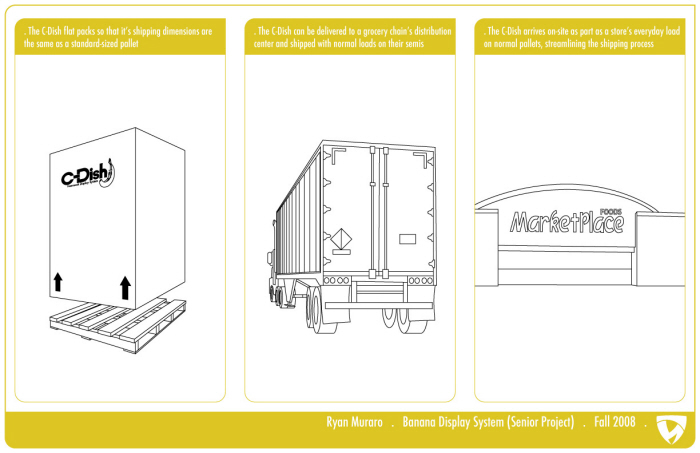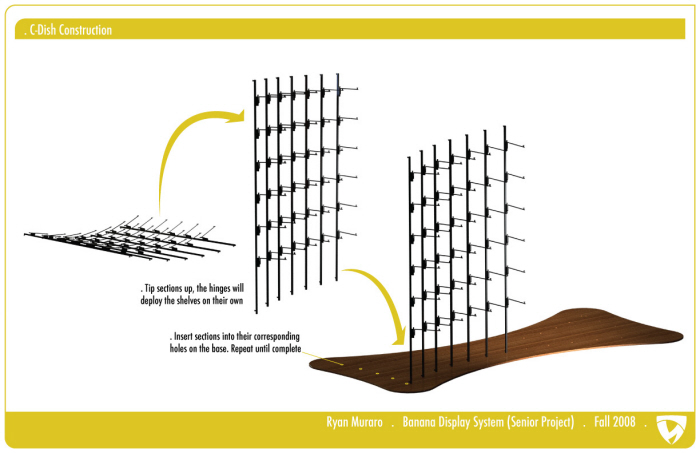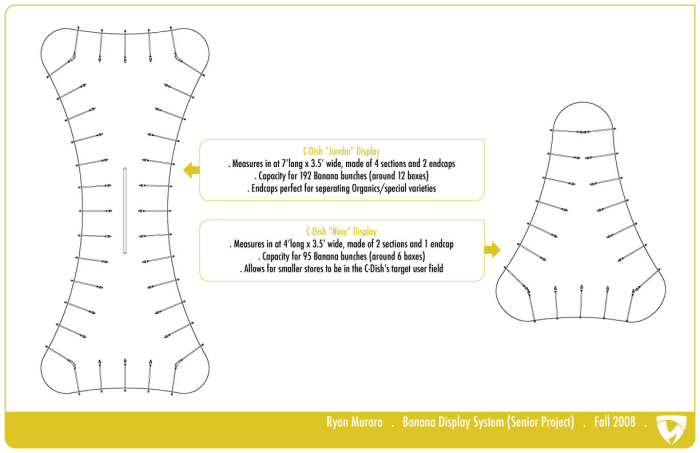
I wanted to create a system for produce departments that was as easy to implement as possible; one area in-particular was the way it was shipped. To ease shipping, the entire system packs onto a single pallet so the C-Dish (short for Cavendish, the proper name for the common Banana) can be shipped to a grocer's distribution center, where it could then be shipped to each store via the grocer's existing distribution system

A quick overview of how the gravity-hinged shelves would deploy. The frame would be made of recycled Alluminum, the base would be made of composite veneered fiber board, and the shelving/backdrop would be made from Burlap

Each post on the C-Dish was identical and made of repeated elements to ease production and help create numerous display systems. I designed two separate systems, one for large stores and one for small stores; The large model was composed of 6 segments (2 ends and 4 mids), while the small "Nino" model was composed of 3 segments (1 end and 2 mids)
gLike



